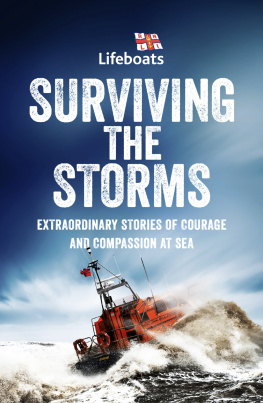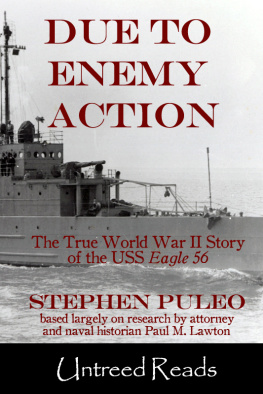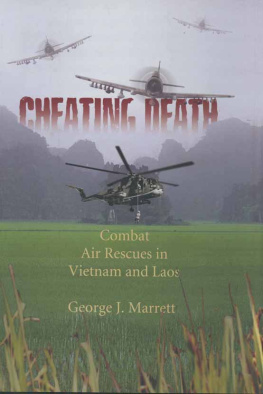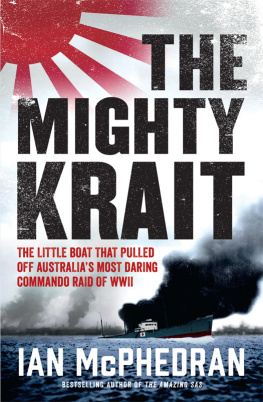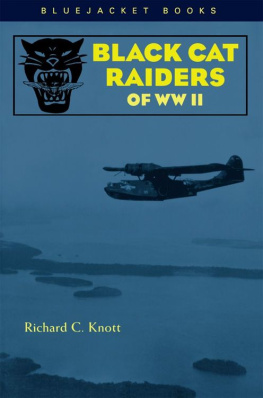No book gets written without assistance from unsung individuals. We were lucky to have the support from our families and friends from the outset. Along the way, there were others whose contributions were critical to Crash Boat appearing in print.
Near my desk is a scale model of the Sea Horse crafted by Al Ross II, master modeler and the author of several books, including the two-volume history Allied Coastal Forces of World War II written with John Lambert. The model is a material reminder of the P-399 and its crew. Al read early and late drafts of the manuscript and offered helpful suggestions on content, as well as encouraged us to document the role of air-sea rescue vessels during the war. Als connection to small combatants dates back to his father Albert P. Rosss service aboard PT 34 in Motor Torpedo Boat Squadron Three in the Philippines.
Many thanks to Tom McCarthy, award-winning ghost writer and editor, for his confidence in Crash Boat after reading an early draft and seeing it through the acquisition process at Lyons Press. Huzzahs for Rick Rinehart, executive editor at Lyons Press, for shepherding the manuscript through the production process in the Rowman & Littlefield Publishing Group. And, of course, I am eternally grateful to my wife, Amy, for her support from the beginning, including reading and commenting on virtually every word.
I am indebted to Karen Wales, my editor at WoodenBoat magazine, for suggesting that I write an article about the Sea Horse for the publication, which appeared in the May/June issue in 2008. Portions of this piece appear in Crash Boat.
Two individuals were especially invaluable to Skippers early work on his memoirs. Jarrell B. Blair, Director of the Augusta Air Museum in Augusta, Kansas, was extremely helpful in gathering information about the War Bond drive, which funded the building of the P-399, and the christening of the vessel. He is the force behind a display at the museum honoring the wartime citizens of Augusta, the Sea Horse, and the crew. Thanks is also owed to Donald Rice, Director of Veterans Affairs for Dutchess County, New York, for his kind assistance.
Lastly, I will always remember Skippers friendship and willingness to take me under his wing during a sensitive period in my life. Every time I hear Duke Ellingtons recording of Take the A Train, a particular favorite aboard the Sea Horse, I think of the man whose friendship spanned two generations in our family.
George D. Jepson
APPENDIX A
Dair N. Long and the Homegrown War Effort
In 1940, when Dair N. Long and his team at Miami Shipbuilding designed the prototype for the Sea Horse and other crash boats, he worked to specifications presented by the British Royal Air Force. The initial orders came in early 1941, and by 1943 more than four hundred boats had been ordered, although fewer were shipped. Several went to South Africa and Russia, the latter for use as small subchasers.
At the time, armed conflict in the Pacific was far off, even as war clouds continued to grow in Europe following Germanys assault on Poland in 1939. But the Japanese attack on Pearl Harbor ignited a response in America down to the countrys grassroots. Industry cranked into high gear to produce ships, aircraft, clothing, food, and war matriel (weapons and munitions) at previously unheard of rates to support US and Allied forces around the world.
Small boatyards such as Fellows & Stewart, in Wilmington, California, leaped into the fray and began constructing wooden vessels. Private yards from Maine to California and from Michigan to Florida that specialized in yachts and fishing vessels before the war converted to accommodate construction of the AVR 63s. By wars end in 1945, these yards, with their skilled shipwrights, had launched seventy-nine AVR 63s for the USAAF.
The boats hull, built upright, was double-planked in cedar inside and mahogany outside, with eight-ounce cotton duck saturated with marine glue between layers. The cedar inner planking ran diagonally at approximately a forty-five-degree angle, while the mahogany outer planking ran longitudinally.
This construction is contrary to the myth that the rescue boats, and the larger PT boats they resembled, were nothing more than plywood speedboats. Underneath the wartime flat gray hulls of both types were the materials and workmanship that rivaled fine sea-going yachts.
In early 1943, while the keel was being laid for the Sea Horse, people rallied from all parts of the country to contribute to the war effort. Far from the sea, in the small town of Augusta, Kansas, citizens conducted a War Bond drive to finance the construction of rescue boat P-399 (one of forty-one hulls built by Fellows & Stewart), ultimately collecting seventy-five thousand dollars, including pennies gathered by school children who wanted to contribute.
On July 6, 1943, Miss Ellen Malcom swung a bottle of champagne across the bow of the P-399, officially christening the boat at the Fellows & Stewart yard. Malcom, an employee of Douglas Aircraft in nearby Long Beach, and originally from Augusta, represented the Kansas community. In an open letter to the citizens of Augusta after the ceremony, she wrote: To good American people like those who bought War Bonds and Stamps to make this ship possible, I send my appreciation and may God Bless America.
This article originally appeared in WoodenBoat magazine 202 in May/June 2008.
George D. Jepson
Dair N. Longs Storied Career
Early in his career, naval architect Dair N. Long caught the eye of Navy brass. In 1938, while a student at the University of Michigan in Ann Arbor, he entered a US Navysponsored contest to design a fifty-four-foot and a seventy-foot MTB for experimental purposes. Long did not win the contest, but his entry impressed the Navy.
The winner of the fifty-four-foot MTB design was George F. Crouch, a well-known designer of powerboats. Sparkman & Stephens, the naval architecture and yacht brokerage firm, won the seventy-foot class.
In mid-1939, Miami Shipbuilding Company was awarded the contract for two experimental patrol-torpedo boats (PT 1 and 2) based on Crouchs design, with some modifications by the Bureau of Ships. Miami Shipbuilding hired Long to oversee the application of the design. With the advent of World War II, Long remained at the company and did not return to his studies at Michigan.
The crash boats that served the AAF were procured during World War II under Navy contracts using AAF funds. In addition to designing the sixty-three-foot crash boat, Dair Long also designed an eighty-five-foot air-sea rescue boat that saw action in the Pacific late in the war. This design was built by many of the civilian boatyards that turned out the AVR 63s. Long and Miami Shipbuilding were also involved with designing and building several military craft used by the Office of Strategic Services (OSS) for classified operations during the war.
Longs early exposure to torpedo boats and his work with crash boats prepared him for some interesting peacetime work. In 1947 the Western Boat Building Company of Tacoma, Washington, commissioned Long to design the Fairliner Torpedo powerboat. His design was along the same radical lines as the Hacker and Dee Wite torpedoes of the period.
The Fairliner Torpedo qualified for Class D inboard racing under the American Power Boat Association rules and was his only entry into the small runabout market. In 1947 one of Longs other designs, a Fairliner twenty-six-foot cruiser, served as camera boat to record the lift-off speed and angle of Howard Hughess HK-1 flying boat (known as the


